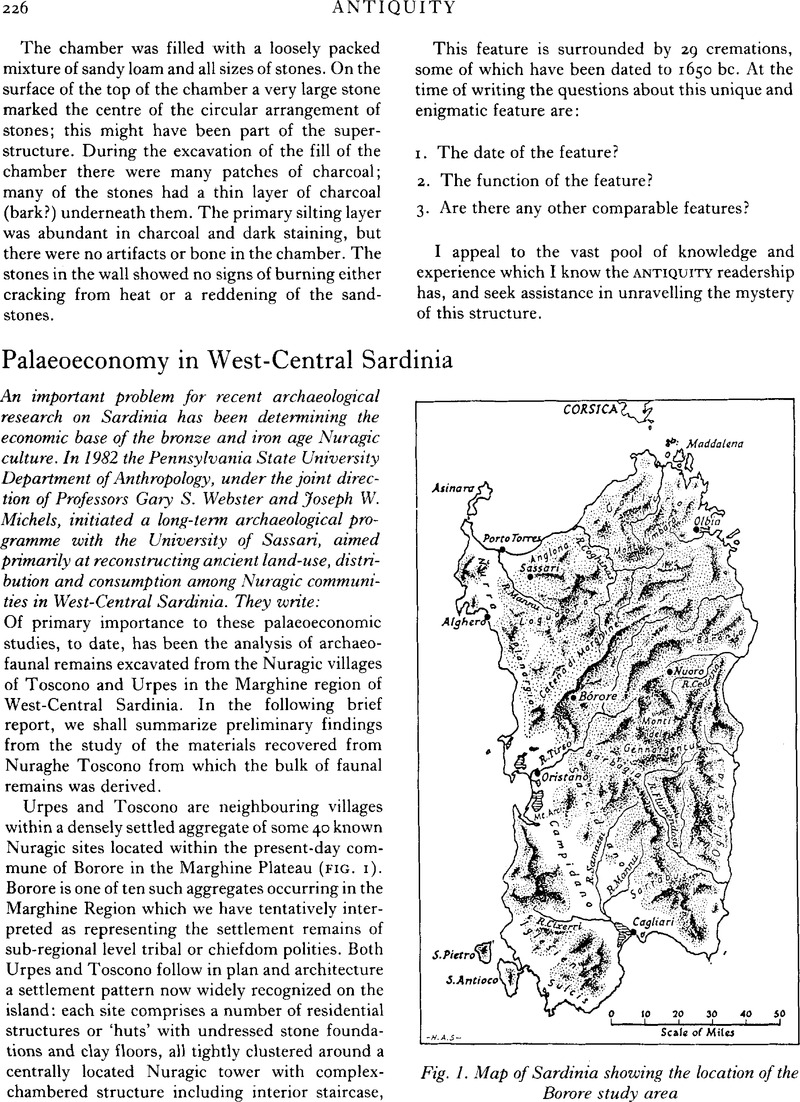No CrossRef data available.
Article contents
Palaeoeconomy in West-Central Sardinia
Published online by Cambridge University Press: 02 January 2015
Abstract
An abstract is not available for this content so a preview has been provided. Please use the Get access link above for information on how to access this content.

- Type
- Notes and News
- Information
- Copyright
- Copyright © Antiquity Publications Ltd 1986
References
Barker, G. 1972. The conditions of cultural and economic growth in the Bronze Age of Central Italy, Proc. Prehist. Soc.
XXXVIII, 171–208.Google Scholar
Barker, G. 1975. Prehistoric territories and economies in Central Italy, in (ed.) E. S. Higgs, Palaeoeconomy (Cambridge), 111–76.Google Scholar
Gilbert, A. & Steinfeld, P. 1977. Faunal remains from Dinka Tepe, Northeastern Iran, Journal of Field Arch., 4, 330–51.Google Scholar
Lewthwaite, J. 1981. Plain tales from the hills: Transhumance in Mediterranean archaeology, in (eds) A. Sheridan & G. Bailey, Economic archaeology BAR Int. series 96 (Oxford).Google Scholar
Rowland, R. JR. 1984. The countryside of Roman Sardinia in (eds)
Balmuth, S. & Rowland, R. Jr. Studies in Sardinian archaeology (Ann Arbor).Google Scholar
White, T. 1953
A method of calculating the dietry percentages of various food animals utilized by aboriginal peoples, American Antiquity, 4, 396–8.Google Scholar


